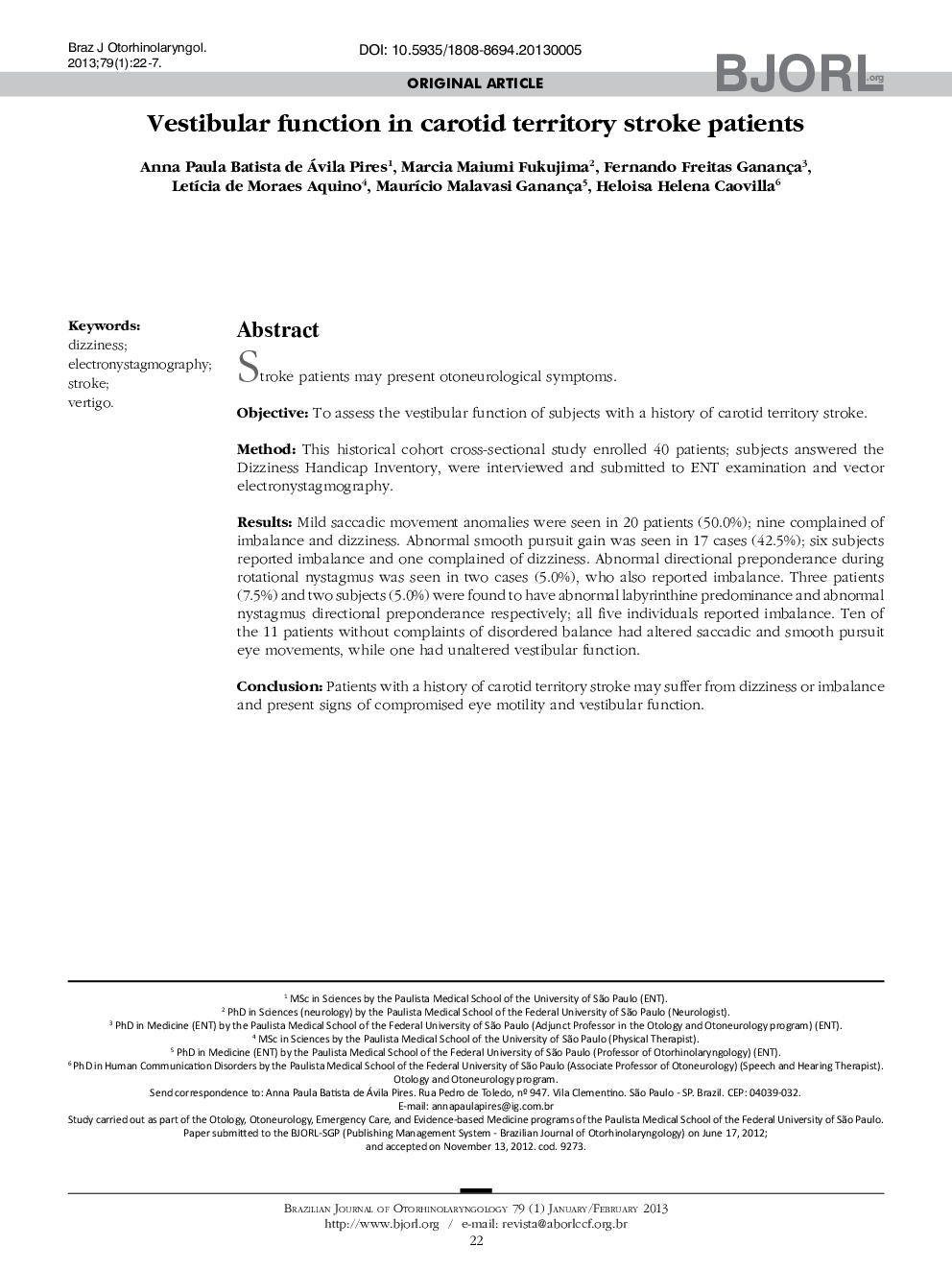| Article ID | Journal | Published Year | Pages | File Type |
|---|---|---|---|---|
| 4106934 | Brazilian Journal of Otorhinolaryngology | 2013 | 6 Pages |
Stroke patients may present otoneurological symptoms.ObjectiveTo assess the vestibular function of subjects with a history of carotid territory stroke.MethodThis historical cohort cross-sectional study enrolled 40 patients; subjects answered the Dizziness Handicap Inventory, were interviewed and submitted to ENT examination and vector electronystagmography.ResultsMild saccadic movement anomalies were seen in 20 patients (50.0%); nine complained of imbalance and dizziness. Abnormal smooth pursuit gain was seen in 17 cases (42.5%); six subjects reported imbalance and one complained of dizziness. Abnormal directional preponderance during rotational nystagmus was seen in two cases (5.0%), who also reported imbalance. Three patients (7.5%) and two subjects (5.0%) were found to have abnormal labyrinthine predominance and abnormal nystagmus directional preponderance respectively; all five individuals reported imbalance. Ten of the 11 patients without complaints of disordered balance had altered saccadic and smooth pursuit eye movements, while one had unaltered vestibular function.ConclusionPatients with a history of carotid territory stroke may suffer from dizziness or imbalance and present signs of compromised eye motility and vestibular function.
